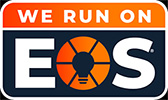Manufacturers, including Parker, are moving quickly to IoT-enable their products because of the exciting new capabilities IoT technologies deliver. For example, equipping off-road industrial equipment with telematics systems that send data to a centralized fleet management platform provides the visibility fleet operators need to increase equipment utilization, reduce maintenance costs and increase safety.
Similar benefits are available for in-plant equipment. When subsystems, such as pumps and power units, are factory-equipped with sensors and network connectivity, plant operators suddenly have the visibility they need to improve efficiencies and reduce downtime.
Delivering value in manufacturing
Deployed broadly, these capabilities deliver significant value in manufacturing. In fact, according to McKinsey, factories and other production environments have the potential to realize the biggest financial impact from the application of IoT. They predict the IIoT will generate an economic value of between $1.2 trillion and $3.7 trillion by 2025. This value will be created through new energy efficiencies, labor productivity, inventory optimization, and improved worker safety.
But, what happens when these IoT-enabled systems take their place alongside legacy systems? Do plant managers and engineers risk creating islands of intelligence within their plants that leave out the legacy systems that make up the bulk of their equipment and limit the return on their investment in IoT infrastructure? Or, will they be forced to replace critical legacy systems prematurely to expand the reach of their IoT initiatives?
Fortunately, the answer to both of these questions is no. “First-fit” – meaning components or subsystems that have intelligence and connectivity designed into them – still receive the lion’s share of the attention when it comes to the future of IoT. However, in many cases there is an opportunity to retrofit legacy devices with IoT technology to allow them to take their place alongside first-fit components in smart machines and processes. In the short term, these retrofit opportunities may prove even more valuable than first-fit opportunities because they can be applied to aging equipment with a higher risk of failure or inefficient operation.
For example, air compressor inefficiency is a common source of wasted energy in manufacturing. New air compression systems have sensors designed into them that allow leaks within the system to be identified to eliminate inefficiencies. But legacy systems can also be instrumented with similar sensors to achieve the same objective.
Key to success of IoT retrofits
Key to the success of legacy system IoT retrofits is the ability to integrate the data from the retrofitted system with other systems, both new and old, to simplify IoT management. This is one of the values of the discrete approach to IoT provided by Parker’s Voice of the Machine™.
It allows each system to act as a standalone application through the Voice of Machine cloud platform and user interface. It also allows the data from the component or subsystem to be delivered to an existing cloud platform through cloud and edge-based integrations and presented in context with other machine data, regardless of whether that data was created by a Parker component or a component from another manufacturer.
In today’s increasingly connected world, it seems short-sighted to not have IoT capabilities included in new equipment that is being installed in either brownfield or greenfield environments. However, it’s also very limiting to restrict IoT to only new components or subsystems, particularly those whose operation have a significant impact on operating costs or productivity.
Parker and its distribution partners have the IoT expertise and toolset to help you develop a plan that focuses IoT on the systems or components where the greatest value can be realized, new or legacy, and create an integrated solution that maximizes return on investment.
